Brazil: Difference between revisions
MJCdetroit (talk | contribs) m Removed city COA from infobox per discussions at Infobox Country |
Sparks1979 (talk | contribs) →Administrative divisions: Made corrections in the judiciary paragraph. |
||
| Line 114: | Line 114: | ||
Each state is divided into [[municipality|municipalities]] ({{lang|pt|''municípios''}}) with their own [[legislative]] council ({{lang|pt|''câmara de vereadores''}}) and a mayor ({{lang|pt|''prefeito''}}), which are autonomous and hierarchically independent from both federal and state government. A municipality may include other towns ({{lang|pt|''distritos''}}) besides the municipal seat; those, however, have no separate government. |
Each state is divided into [[municipality|municipalities]] ({{lang|pt|''municípios''}}) with their own [[legislative]] council ({{lang|pt|''câmara de vereadores''}}) and a mayor ({{lang|pt|''prefeito''}}), which are autonomous and hierarchically independent from both federal and state government. A municipality may include other towns ({{lang|pt|''distritos''}}) besides the municipal seat; those, however, have no separate government. |
||
The [[judiciary]] is organised at the state and federal levels within districts called {{lang|pt|''comarcas''}}. |
The [[judiciary]] is organised at the state and federal levels within districts called {{lang|pt|''foros''}}. The {{lang|pt|''foros''}} in the state judiciary are called {{lang|pt|''comarcas''}}. Each {{lang|pt|''comarca''}} may include one or several municipalities. In the federal judiciary the {{lang|pt|''foros''}} are called {{lang|pt|''seções judiciárias''}}. One {{lang|pt|''seção judiciária''}} corresponds to the area of one State or the Federal District, according to article 110 of the Federal Constitution. {{lang|pt|''Seções judiciárias''}} may be divided in smaller units, called {{lang|pt|''subseções judiciárias''}}. |
||
; See also : [[Regions of Brazil]]{{·}} [[List of major cities in Brazil]]{{·}} [[List of cities in Brazil]] |
; See also : [[Regions of Brazil]]{{·}} [[List of major cities in Brazil]]{{·}} [[List of cities in Brazil]] |
||
Revision as of 15:53, 4 April 2007
Editing of this article by new or unregistered users is currently disabled due to vandalism. See the protection policy and protection log for more details. If you cannot edit this article and you wish to make a change, you can submit an edit request, discuss changes on the talk page, request unprotection, log in, or create an account. |
Federative Republic of Brazil República Federativa do Brasil | |
|---|---|
| Motto: Ordem e Progresso (Portuguese) "Order and Progress" | |
| Anthem: Brazilian National Anthem | |
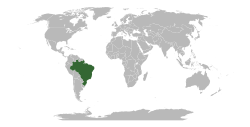 | |
| Capital | Brasília |
| Largest city | São Paulo |
| Official languages | Portuguese |
| Government | Presidential Federal republic |
| Luiz Inácio Lula da Silva | |
| José Alencar Gomes da Silva | |
| Independence from Portugal | |
• Declared | September 7 1822 |
• Recognised | August 29 1825 |
• Republic | November 15 1889 |
• Water (%) | 0.65 |
| Population | |
• 2006 estimate | 188,078,261 (5th) |
• 2000 census | 169,799,170 |
| GDP (PPP) | 2006 estimate |
• Total | $1.616 trillion (9th) |
• Per capita | $8,600 (68th) |
| GDP (nominal) | 2006 estimate |
• Total | $943.6 billion[1] (10th) |
• Per capita | $5,017 (74th) |
| Gini (2003) | 58 high inequality |
| HDI (2004) | Error: Invalid HDI value (69th) |
| Currency | Real (BRL) |
| Time zone | UTC-2 to -5 (officially -3) |
| Calling code | 55 |
| ISO 3166 code | BR |
| Internet TLD | .br |
Brazil, officially the Federative Republic of Brazil (Portuguese: Brasil or [República Federativa do Brasil] Error: {{Lang}}: text has italic markup (help), [2]), is the largest and most populous country in South America; and the fifth largest in the world in both area and population. Spanning a vast area between central South America and the Atlantic Ocean, it is the easternmost country of the Americas and borders every other South American country except Ecuador and Chile (viz. Uruguay, Argentina, Paraguay, Bolivia, Peru, Colombia, Venezuela, Guyana, Suriname) and also France (the département of French Guiana).
Brazil was colonized by Portugal and it is the only Portuguese-speaking country in the Americas. It is a multiracial country with a population composed of European, Amerindian, African and Asian elements, more often mixed in the same individual than separated into different communities. It has the largest Roman Catholic population in the world.
History
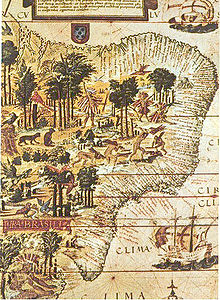
Before the first Portuguese explorers, led by Pedro Álvares Cabral, arrived in 1500, Brazil is thought to have been inhabited by semi-nomadic populations for at least 10,000 years. Over the next three centuries, it was resettled by the Portuguese and exploited mainly for brazil wood (Pau-Brasil), then sugarcane (Cana-de-Açúcar), coffee beans and gold mining. The colony's manpower was initially composed of enslaved peoples, firstly Amerindians and then, after 1532, mainly Africans.
The only recorded transcontinental relocation of a royal family occurred in 1808 when the Portuguese royal family, headed by Queen Maria I of Portugal and her son and regent, the future João VI of Portugal, fled Napoleon's armies and relocated to Rio de Janeiro, along with the government and nobility. Although they returned in 1821, the interlude led to the opening of commercial ports to the United Kingdom — at the time isolated from most European ports by Napoleon — and to the elevation of Brazil to the status of a United Kingdom under the Portuguese Crown. Upon João VI's departure, the remaining royal government in Rio moved to dissolve the Kingdom of Brazil and return it to the status of colony. This resulted in the small scale conflicts known as the Brazilian War of Independence. On 7 September 1822 Prince regent Dom Pedro I (later Pedro IV of Portugal) declared independence, establishing the independent Empire of Brazil. A treaty recognizing the Empire's independence was signed on 29 August, 1825 with Britain and Portugal. As the crown remained in the hands of the House of Bragança, this was more the severance of the Portuguese empire in two, than an independence movement as seen elsewhere in the Americas.

The Brazilian Empire was formally a democracy in the British style, although in practice, the emperor-premier-parliament balance of power more closely resembled the autocratic Austrian Empire. Slavery was abolished in 1888, through the "Golden Law", created by Princess Isabel, and intensive European immigration created the basis for industrialization. Pedro I was succeeded by his son, Pedro II — who in old age was caught by a political dispute between the Army and the Cabinet, a crisis arising from the Paraguay War. Pedro II was deposed from the throne on 15 November 1889, when a federal republic (officially, the Republic of the United States of Brazil) was established by Field Marshal Deodoro da Fonseca.
In the late nineteenth and early twentieth centuries, Brazil attracted over 5 million European, Arab and Japanese immigrants. During this time Brazil became industrialized, further colonized, and its interior further explored and developed. Brazilian democracy was replaced by dictatorships three times — 1930–1934 and 1937–1945 under Getúlio Vargas, and 1964–1985, under a succession of generals appointed by the military. It is important to note that the military forces responsible for the coup of 1964 had the "cooperation" of the U.S. Government. Lincoln Gordon (American Ambassador to Brazil) reported that the "pro-United States" rebellion would help to "restrain left-wing excesses" and "create a greatly improved climate for private investment."[3]
Since 1985, Brazil has been regarded as a presidential democracy, a status affirmed by a plebiscite in 1993 which asked voters to indicate a preference for a presidential or parliamentary system. Voters also decided not to restore the country's constitutional monarchy.
Government and politics


The capital of Brazil is Brasília. According to the Constitution promulgated in 1988, Brazil is a federal presidential representative democratic republic, wherein the President is both head of state and head of government. Currently the President of Brazil is Luiz Inácio Lula da Silva (Lula). He was re-elected on 29 October 2006, extending his position as President of Brazil until the end of 2010. One of the fundamental principles of the politics in the Republic is the multi-party system, as a guarantee of political freedom.
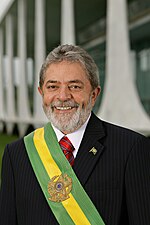
The administrative structure of the State is a federation; however, Brazil has included the municipalities as autonomous political entities making the federation tripartite: encompassing the Union, the States, and the municipalities. The legal system is based on Roman law.
The Union's executive power is exercised by the government, headed by the president, who is elected for a four-year term, and is allowed to be re-elected for one other term. Legislative power is vested in the National Congress, which is bicameral. The deputies of the Chamber of Deputies are elected every four years in a system of proportional representation by states.
The members of the Federal Senate are elected for an eight-year term. The Ordinary Law making process requires the participation of the executive, which has a right to veto on new legislation, and has an exclusive prerogative of initiative of legislation on certain matters. Additionally, if relevant and urgent circumstances justify it, the executive may issue a "Provisory Measure," which has the binding force of the Law and comes into force immediately. The "Provisory Measure" retains its full power for up to 120 days, unless it is removed by the Congress.
Administrative divisions
Brazil is a federation consisting of twenty-six states ([estados] Error: {{Lang}}: text has italic markup (help)) and one federal district ([Distrito Federal] Error: {{Lang}}: text has italic markup (help)), making a total of twenty-seven "federate units".
The Brazilian states enjoy a significant autonomy of government, law making, public security and taxation. The government of a state is headed by a Governor ([governador] Error: {{Lang}}: text has italic markup (help)), elected by popular vote, and also comprises its own legislative body ([assembléia legislativa] Error: {{Lang}}: text has italic markup (help)). Each state is divided into municipalities ([municípios] Error: {{Lang}}: text has italic markup (help)) with their own legislative council ([câmara de vereadores] Error: {{Lang}}: text has italic markup (help)) and a mayor ([prefeito] Error: {{Lang}}: text has italic markup (help)), which are autonomous and hierarchically independent from both federal and state government. A municipality may include other towns ([distritos] Error: {{Lang}}: text has italic markup (help)) besides the municipal seat; those, however, have no separate government.
The judiciary is organised at the state and federal levels within districts called [foros] Error: {{Lang}}: text has italic markup (help). The [foros] Error: {{Lang}}: text has italic markup (help) in the state judiciary are called [comarcas] Error: {{Lang}}: text has italic markup (help). Each [comarca] Error: {{Lang}}: text has italic markup (help) may include one or several municipalities. In the federal judiciary the [foros] Error: {{Lang}}: text has italic markup (help) are called [seções judiciárias] Error: {{Lang}}: text has italic markup (help). One [seção judiciária] Error: {{Lang}}: text has italic markup (help) corresponds to the area of one State or the Federal District, according to article 110 of the Federal Constitution. [Seções judiciárias] Error: {{Lang}}: text has italic markup (help) may be divided in smaller units, called [subseções judiciárias] Error: {{Lang}}: text has italic markup (help).
Geography
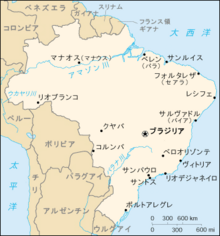
Brazil is characterized by the extensive low-lying Amazon Rainforest in the north and a more open terrain of hills and low mountains to the south — home to most of the Brazilian population and its agricultural base. Along the Atlantic coast are also found several mountain ranges, reaching roughly 2,900 metres (9,500 ft) high.
The highest peak is the 3,014 metre (9,735 ft) Pico da Neblina (Misty Peak) in Guiana's highlands. Major rivers include the Amazon, the largest river in the world in flowing water volume, and the second-longest in the world; the Paraná and its major tributary, the Iguaçu River, where the Iguaçu Falls are located; the Negro, São Francisco, Xingu, Madeira and the Tapajós rivers.
Located mainly within the tropics, Brazil's climate has little seasonal variation. In southernmost Brazil, however, there is subtropical temperate weather, occasionally experiencing frost and snow in the higher regions. Precipitation is abundant in the humid Amazon Basin, but more arid landscapes are found as well, particularly in the northeast.
A number of islands in the Atlantic Ocean are part of Brazil:


Geographically, mainland Brazil is commonly divided into five regions: North, Northeast, Central-West, Southeast and South.
- The North constitutes 45.27% of the surface of Brazil and it is the region with the lowest number of inhabitants. With the exception of Manaus, which hosts a tax-free industrial zone, and Belém, with the biggest metropolitan area of the region, it is a fairly unindustrialised and undeveloped region. It accommodates most of the largest rainforest of the world and many indigenous tribes.
- The Northeast has one third of Brazil's population. The region is culturally diverse, with roots from the Portuguese colonial period, Afro-Brazilian culture and some Brazilian Indian influence. It is also the poorest region of Brazil, and has long periods of dry climate. It is well-known for its beautiful coast. The most important cities are Recife, Salvador and Fortaleza.
- The Central-West has a low demographic density compared to the other regions, mostly because of the Pantanal, the world’s largest marshlands area, and a small part of the Amazon rainforest, in the northwest. However, much of the region is covered by Cerrado, the largest savanna in the world. It is also the most important area for agriculture in the country. The most important cities of this region are: Brasília (the capital), Goiânia, Campo Grande and Cuiabá.
- The Southeast is the richest and most densely populated region. It has more inhabitants than any other South American country, and hosts one of the largest megalopolis of the world, whereof the main cities are the country's two biggest ones; São Paulo and Rio de Janeiro. The region is very diverse, including the major business centre of São Paulo, the historical cities of Minas Gerais and its capital Belo Horizonte, the third-largest metropolitan area in Brazil, the world famous beaches of Rio de Janeiro, and the acclaimed coast of Espírito Santo.
- The South is the wealthiest region by GDP per capita and has the best standard of living in the country. It is also the coldest region of Brazil, with occasional occurrences of frosts and snow in some of the higher altitude regions. The region has been heavily settled by European immigrants, mainly of Italian, German, Portuguese and Slavic ancestry, and shows clear influences from these cultures. The most important cities of this region are: Porto Alegre, Curitiba, Florianópolis, Blumenau, Novo Hamburgo, Londrina, Caxias do Sul, Pelotas, Passo Fundo and Joinville.
Economy
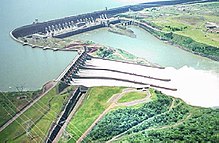
Possessing large and well-developed agricultural, mining, manufacturing,[4] and service sectors, as well as a large labor pool, Brazil's GDP (PPP) outweighs that of any other Latin American country, being the core economy of Mercosul. The country has been expanding its presence in world markets. Major export products include aircraft, coffee, vehicles, soybean, iron ore, orange juice, steel, textiles, footwear, corned beef and electrical equipment.
According to the International Monetary Fund and the World Bank, Brazil has the ninth largest economy in the world at Purchasing Power Parity and eleventh largest at market exchange rates. Brazil has a diversified middle income economy with wide variations in development levels. Most large industry is agglomerated in the South and South-East. The North-East is the poorest region of Brazil, but it is beginning to attract new investment.
Brazil's diverse industries range from automobiles, steel and petrochemicals to computers, aircraft, and consumer goods and amount to one-third of the GDP. With the increased economic stability provided by the Plano Real, Brazilian and multinational businesses have invested heavily in new equipment and technology, a large proportion of which has been purchased from North American enterprises.

Brazil has a diverse and sophisticated services industry as well. During the early 1990s, the banking sector amounted to as much as 16% of GDP. Although undergoing a major overhaul, Brazilian financial services industry provides local businesses with a wide range of products and is attracting numerous new entrants, including U.S. financial firms. The São Paulo and Rio de Janeiro stock exchanges are undergoing a consolidation.
According to international standards, Brazil has the ninth biggest economy in the world (see List of countries by GDP) and is among those countries constructing sophisticated technologies such as aircraft (see Embraer). As a core G20 country, Brazil has been expanding its influence in global economic negotiations. Although Brazil's economy is progressive and regionally important, the problems of widespread state bureaucracy, corruption, poverty and illiteracy are still major barriers to furthering its development.
Environment




Brazil's immense area is subdivided into different ecosystems, which together sustain some of the world's greatest biodiversity. Due to the relatively explosive economic and demographic rise of the country in the last century, Brazil's ability to protect its environmental habitats has increasingly come under threat. Extensive logging in the nation's forests, particularly the Amazon, both official and unofficial, destroys areas the size of a small country each year, and potentially a diverse variety of interesting plants and animals.[5]
With abundant fauna and flora, Brazil is home to many thousands of species, most of them still undiscovered. By 2020, it is estimated that at least 50% of the species resident in Brazil will become extinct.[citation needed]
As several of these specimens possess special characteristics, or are built in an interesting way, some of their capabilities may be copied for use in technology (see bionics).[citation needed] The revenues derived from such plans may still hold the key to preserve the country's animal and plant species.
There is general consensus, that Brazil has the highest number of both terrestrial vertebrates and invertebrates of any country in the world. This high diversity of fauna can be explained by the sheer size of Brazil and also the great variation in ecosystems. The numbers published about Brazil's fauna diversity can vary from source to source, as taxonomists sometimes disagree about species classifications and information can be incomplete or out of date. Also new species continue to be discovered and, sadly, some species go extinct in the wild. Brazil has the highest primate diversity of any country in the world with 77 species and fresh water fish (over 3000 species), it claims the second-highest number of amphibian species, the third highest number of bird species and is ranked fifth in reptile species. Many of the species that are at risk live in threatened habitats such as the Atlantic Forest.
Demographics
Brazil's population is very diverse, comprising many races and ethnic groups. In general, Brazilians are mostly come from four sources of migration:
- Amerindians, Brazil's indigenous population, came from human groups that migrated from Siberia across the Bering Strait around 9000 BC.
- Portuguese colonists and settlers, arriving from 1500 onward.
- Diverse groups of immigrants from Europe, Asia and the Middle East arriving in Brazil during the late nineteenth and early twentieth centuries.
- African slaves brought to the country from 1530 until the end of the slave trade in 1850.
It is believed that the Americas were settled by three migratory waves from Northern Asia. The Brazilian Indians are thought to be descended from the first wave of migrants, who arrived in the region around 9000 BC. The main Native Brazilian groups were the Tupi-Guarani, the Jê, the Arawaks and the Caraibas (Caribs). The Tupi-Guarani nation, originally from the Parana river basin and also the main of Native-Paraguayan nations, had spread all along the Brazilian coastline from South to North and got to be known by the Portuguese as "Os Índios da Língua Geral" ("The Indians of the General Language"); the Jê nation occupied the most of the interior of the country from Maranhão to Santa Catarina. The Arawaks and the Caribs, the last ones to get in contact with the Portuguese, lived in the North and Northwest of Brazil.
The European immigration to Brazil started in the sixteenth century, the vast majority of them coming from Portugal. In the first two centuries of colonization, 100,000 Portuguese arrived in Brazil (around 500 colonists per year). In the eighteenth century, 600,000 Portuguese arrived (10,000 per year). The first region to be settled by the Portuguese was Northeastern Brazil, followed by the Southeastern region. The interior began to be settled during the eighteenth century. The Portuguese were the only ethnic group to settle across Brazil.
The original Amerindian population of Brazil (between three and five million) has in large part been exterminated or assimilated into the Portuguese population. The Mamelucos (or Caboclos, mixed-race between Whites and Indians) have always been present in many parts of Brazil.
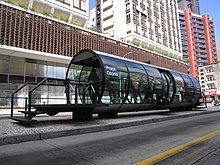
Another important ethnic group, Africans, first arrived as slaves. At first many came from Guinea, although by the end of the eighteenth century many had been taken from Angola and Mozambique (or, in Bahia, from Nigeria). By the time of the end of the slave trade in 1850, around three to five million slaves had been brought to Brazil – 37% of all slave traffic between Africa and the Americas.At the time of slavery a mixed people came out through rapes or affairs between white masters and black or Indian slaves.
The large influx of European immigrants to Brazil occurred in the late nineteenth and early twentieth centuries. Between 1870 and 1930, more than 5 million immigrants entered Brazil. These immigrants were divided in two groups: a part of them was sent to Southern Brazil to work as small farmers. However, the biggest part of the immigrants was sent to Southeastern Brazil to work in the coffee plantations. The immigrants sent to Southern Brazil were mainly Germans (starting in 1824, mainly from Rhineland-Palatinate, Pomerania, Hamburg, Westphalia, etc) and Italians (starting in 1875, mainly from the Veneto and Lombardia). In the South, the immigrants established rural communities that, still today, have a strong cultural connection with their ancestral homelands. In Southeastern Brazil most of the immigrants were Italians (mainly from the Veneto, Campania, Calabria and Lombardia), Portuguese (mainly from Beira Alta, Minho and Alto Trás-os-Montes), Spaniards (mainly from Galicia and Andalusia).

Notably, the early part of the twentieth century saw a large influx of Japanese (mainly from Honshū and Okinawa) and Arabs (from Lebanon and Syria). These Arab immigrants were -and still are- wrongly called "Turks" by the Brazilians because their original countries were still under Turkish rule back in the times Arab immigration to Brazil began. Curiously, it was very few, if not even insignificant, the number of actual Turks who ever migrated to Brazil.
According to the Memorial do Imigrante,[6] Brazil attracted nearly 5.5 million immigrants between 1870 and 1953: approximately 1,550,000 Italians, 1,470,000 Portuguese, 650,000 Spaniards, 210,000 Germans, 190,000 Japanese, 120,000 Poles and 650,000 of many other nationalities.
Brazil's population is mostly concentrated along the coast, with a lower population density in the interior. The population of the southern states is mainly of European descent, while the majority of the inhabitants of the north and northeast are of mixed ancestry (Amerindians, Africans and Europeans)
According to the Brazilian constitution of 1988, racism is an unbailable crime and must be met with imprisonment.
Ethnicity
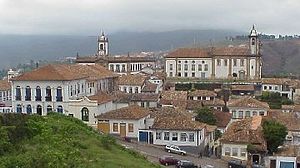
The 2000 IBGE census found Brazil to consist of:[7]
- 53.7% white
- 38.5% pardo or mulatto (mixed-race)
- 6.2% black
- 0.5% Asian
- 0.4% Amerindian
- 0.7% unspecified
Languages
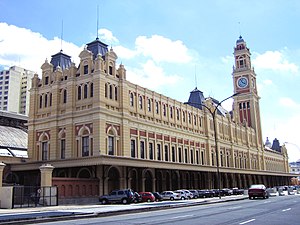
Portuguese is the only official language of Brazil. It is spoken by nearly the entire population and is virtually the only language used in schools, newspapers, radio, TV and for all business and administrative purposes. Moreover, Brazil is the only Portuguese-speaking nation in the Americas, making the language an important part of Brazilian national identity.
Portuguese as spoken in Brazil has developed independently of the European mother tongue, and it has undergone fewer phonetic changes than the language spoken in Portugal, thus it is often said that the "language of Camões", who lived in the sixteenth century, sounded closer to modern Brazilian Portuguese, than to the language spoken in Portugal today, and that his work is poetically more perfect when read the Brazilian way. Brazilian Portuguese has notable influences from Amerindian and African languages. Generally, native speakers of each variant can understand one another, but there are several significant phonological, lexical and orthographic differences.
Minority languages

Many Amerindian languages are spoken daily in indigenous communities, primarily in Northern Brazil. Although many of these communities have significant contact with Portuguese, today there are incentives for teaching and preserving native languages. In 2006, the City of Sao Gabriel da Cachoeira in the region of Cabeça do Cachorro (Northwestern region of the State of Amazonas), has adopted some indigenous languages as some of its other official languages along with Portuguese.
Other languages are spoken by descendants of immigrants, who are usually bilingual, in small rural communities in Southern Brazil. The most important are the Brazilian German dialects, such as Riograndenser Hunsrückisch and the Pomeranian language, and also the Talian, based on the Italian Venetian language. In the city of São Paulo, Japanese can be heard in the immigrant neighbourhoods, like Liberdade.
English is part of the official high school curriculum, but few Brazilians are truly fluent in the language, even in Brazilian universities. Spanish is understood to varying degrees by many Brazilians, especially on the borders with Colombia, Peru, Argentina, Paraguay and Uruguay.
Social issues
Poverty and economic inequality
According to Fundação Getulio Vargas, in June 2006 the rate of poverty based into lacework was of 18.57% of the population - a 19.8% reduction during the previous four years.[8] The rate of poverty is in part attributed to the country's economic inequality. Brazil ranks among the world's highest nations in the Gini coefficient index of inequality assessment.
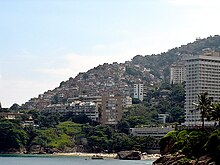
Poverty in Brazil is most visually represented by the various favelas, slums in the country's metropolitan areas and remote upcountry regions that suffer with economic underdevelopment and below-par standards of living. There are also great differences in wealth and welfare between regions.[9] While the Northeast region has the worst economic indicators nationwide due to low coverage and quality of public services and widespread corruption, many cities in the South and Southeast enjoy First World socioeconomic standards.[10] In 2005, Brazil had more than 15 million (10.2%) people that were considered to be illiterate.[11]
A recent attempt to mitigate these problems is the "Fome Zero" hunger-eradication program implemented by President Luiz Inácio Lula da Silva. Part of this is "Bolsa Família", a major anti-poverty program that gives money directly to impoverished families.
Culture
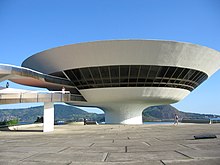
The core culture of Brazil is rooted in the culture of Portugal. The Portuguese colonists and immigrants brought the Roman Catholic faith, the Portuguese language and many traditions and customs that still influence the modern-day Brazilian culture.
As a multiracial country, its culture also absorbed other influences. The Amerindian peoples influenced Brazil's language and cuisine and the Africans, brought as slaves, largely influenced Brazil's music, dance, cuisine, religion and language. The Yoruba traditions, from nowadays Southwest Nigeria had made its way strongly into Afro-Brazilian religion and into Brazilian religiousness as a whole. Ancient Yoruba Orishas (gods) like Shango and Oxum are largely worshipped in Brazil, while the Samba and the Capoeira (musical rhythm and martial art, respectively) were originally contributions from the Bantu peoples from Angola.
Italian, German and other European immigrants came in large numbers and their influences are felt closer to the Southeast and South of Brazil.
- See also
- Brazilian Carnival · Brazilian skyscrapers · Cuisine of Brazil · List of Brazilians · Literature of Brazil · Music of Brazil · Cinema of Brazil · Sports in Brazil · Religion in Brazil · Holidays in Brazil
Religion

According to the IBGE census:[12]
- 73.9% are Roman Catholics (about 125 million).
- 15.4% are Protestants (about 26 million).
- 7.4% consider themselves agnostics, atheists or without a religion (about 12 million).
- 1.3% are followers of Spiritism (about 2.2 million).
- 0.3% are followers of African traditional religions such as Candomblé and Umbanda.
- 1.7% are members of other religions. Some of these are Jehovah's Witnesses (1,100,000), Buddhism (215,000), Latter-day Saints (199,645), Judaism (87,000), and Islam (27,000).
- Some practice a mixture of different religions, such as Catholicism, Candomblé, and indigenous American religion combined.
Brazil has the largest Roman Catholic population in the world.
Followers of Protestantism are rising in number. Until 1970, the majority of Brazilian Protestants were the ones of "traditional churches", mostly Lutherans, Presbyterians and Baptists. Since then, numbers of Pentecostal and Neopentecostal adherents have increased significantly.
Some of the African slaves brought to Brazil were the first Muslims in Brazil. Today, the Muslim population in Brazil is made up of mostly Arab immigrants. A recent trend has been the increase in conversions to Islam among non-Arab citizens.[13] See Islam in Brazil.
The largest population of Buddhists in Latin America lives in Brazil. This is mostly because Brazil has the largest Japanese population outside Japan.
Brazil appears as a devout country to outsiders yet in an IBOPE poll, about 8% of Brazilians declared themselves to be non-religious (with 2% declaring themselves atheists) and 58% of Catholics considered themselves "not very practicing" or "not at all practicing".[14]
Sports
The most popular sport in Brazil is football, and the country is renowned for the quality of its players, including Pelé, Garrincha, Jairzinho, Rivelino, Carlos Alberto, Roberto Dinamite, Edmundo, Zico, Sócrates, Romário, Ronaldo, Cafu, Rivaldo, Roberto Carlos, Juninho, Adriano, Diego, Robinho, Ronaldinho and Kaká. The Brazilian national football team (Seleção), has been victorious in the World Cup tournament a record five times. Eight Brazilian clubs have won Copa Libertadores, the biggest South American clubs tournament.
Brazil has also achieved success in other international sports, mainly volleyball, basketball, tennis, gymnastics, judo and auto racing.
Sports created in Brazil:
- Beach soccer, created in the beaches of Rio de Janeiro.
- Footvolley, a mix of football and volleyball, also played in sand.
- Brazilian Jiu-Jitsu, a variation of jiu-jitsu.
- Vale tudo, a fight sport.
- Capoeira, a martial art of African heritage.
- Futsal, or Futebol de Salão, the official version of indoor soccer.
Science and technology
Some of Brazil's most important technology nodes are located in São José dos Campos, Campinas, São Carlos, Rio de Janeiro, Curitiba, Porto Alegre, Belo Horizonte, Recife and São Paulo.
Brazilian information technology is comparable to other countries who play a major role in the international market, like India and China but with a bigger internal market, the exports of software still limited[15]. Catering for the internal market, Brazilian IT is particularly efficient in financial services, defense, CRM, eGovernment, and healthcare. The government of Brazil is attempting a switch to free software and operating systems in place of proprietary software.[16]
The Brazilian Space Agency (Agência Espacial Brasileira) is the civilian authority in Brazil that is in charge of the country's burgeoning space program. It operates a rocket launch site at Alcântara, Maranhão.
National Holidays
| Date | English name | Local name | |
|---|---|---|---|
| January 1 | New Year's Day | Confraternização universal | |
| February 20 | Carnival | Carnaval | (2007 date) |
| April 6 | Good Friday | Paixão de Cristo | (2007 date) |
| April 21 | Tiradentes | ||
| May 1 | Labour Day | Dia do trabalho | |
| June 7 | Corpus Christi | (2007 date) | |
| September 7 | Independence Day | Dia da Independência | |
| October 12 | Our Lady of Aparecida | Nossa Senhora Aparecida | |
| November 2 | All Souls' Day | Dia de Finados | |
| November 15 | Proclamation of the Republic | Proclamação da República | |
| December 25 | Christmas | Natal |
See also
Column-generating template families
The templates listed here are not interchangeable. For example, using {{col-float}} with {{col-end}} instead of {{col-float-end}} would leave a <div>...</div> open, potentially harming any subsequent formatting.
| Type | Family | Handles wiki
table code?† |
Responsive/ mobile suited |
Start template | Column divider | End template |
|---|---|---|---|---|---|---|
| Float | "col-float" | Yes | Yes | {{col-float}} | {{col-float-break}} | {{col-float-end}} |
| "columns-start" | Yes | Yes | {{columns-start}} | {{column}} | {{columns-end}} | |
| Columns | "div col" | Yes | Yes | {{div col}} | – | {{div col end}} |
| "columns-list" | No | Yes | {{columns-list}} (wraps div col) | – | – | |
| Flexbox | "flex columns" | No | Yes | {{flex columns}} | – | – |
| Table | "col" | Yes | No | {{col-begin}}, {{col-begin-fixed}} or {{col-begin-small}} |
{{col-break}} or {{col-2}} .. {{col-5}} |
{{col-end}} |
† Can template handle the basic wiki markup {| | || |- |} used to create tables? If not, special templates that produce these elements (such as {{(!}}, {{!}}, {{!!}}, {{!-}}, {{!)}})—or HTML tags (<table>...</table>, <tr>...</tr>, etc.)—need to be used instead.
Lists of Brazilian flora and fauna
Mammals · Birds · Reptiles · Amazon Rainforest vegetation · Atlantic Forest vegetation · Caatinga vegetation · Cerrado vegetation · Pantanal vegetation · Endangered flora
Notes and references
- ^ https://www.cia.gov/cia/publications/factbook/geos/br.html#Econ
- ^ Some possible pronunciations:IPA: [ʁe'publikɐ fedeɾa'tivɐ du bɾa'ziw], [he.'pu.bli.kɐ fe.de.ɾa.'tʃi.vɐ du bɾa.'ziw], [ʁe.'pu.bli.kɐ fe.de.ɾa.'ti.vɐ du bɾa.'zil], [hɛ.'pu.bli.kɐ fɛ.dɛ.ɾa.'ti.vɐ du bɾa.'ziw], [ʀe'publɪkä fedeɾä'tʰivɐ dʊ brä'zɪɫ]. Brazilian Portuguese has no official standard pronunciation, so may change from region to region. European Portuguese pronunciation of the official name of Brazil is: [ʁɛ.'pu.βli.ka fɨ.ðɨ.ɾɐ.'ti.vɐ du bɾɐ.'ziɫ] . See Portuguese Phonology for more details.
- ^ [1]
- ^ CIA Factbook
- ^ http://www.fs.fed.us/global/globe/l_amer/brazil.htm, USDA Forest Service International Programs, retrieved February 2007.
- ^ Memorial do Imigrante "Memorial do Imigrante".
{{cite web}}: Check|url=value (help); Cite has empty unknown parameter:|coauthors=(help) - ^ 2000 Demographic Census
- ^ FGV - Gráfico Miséria
- ^ "PIB dos municípios revela concentração e desigualdades na geração de renda". Retrieved 2007-02-22.
{{cite web}}: Cite has empty unknown parameter:|coauthors=(help) - ^ [2]
- ^ [3]
- ^ Official data on Religion distribution in Brazil
- ^ [4]
- ^ "Pesquisa de Opinião dos Católicos Brasileiros sobre Direitos Reprodutivos, Relação Igreja-Estado e temas Relacionados , "Aborto e Temas Relacionados"" (pdf). Retrieved 2007-02-19.
{{cite web}}: Cite has empty unknown parameter:|coauthors=(help) - ^ [http://www.bndes.gov.br/conhecimento/seminario/EugenioStaub.pdf Panorama da Indústria Brasileira de Eletro-Eletrônica e Software
- ^ "Brazil adopts open-source software". 2005-06-02.
{{cite news}}: Check date values in:|date=(help)
- Much of the material in these articles comes from the CIA World Factbook 2000 and the 2003 U.S. Department of State website.
- Wagley, Charles (1963). An Introduction to Brazil. New York, New York: Columbia University Press.
External links
- Government and administration
- Template:Pt icon Brasil.gov.br — Official government portal
- Template:Pt icon Câmara dos Deputados — Official Chamber of Deputies site
- Template:Pt icon Presidência da República — Official presidential site
- Template:Pt icon Senado Federal — Official Senate site
- Information and statistics
- Congressional Research Service (CRS) Reports regarding Brazil
- Library of Congress — A Country Study: Brazil
- Encyclopaedia Britannica Brazil Country Page
- Template:En icon/Template:Pt icon National Library
- Satellite images of Brazil's main cities
- "Brazil". The World Factbook (2024 ed.). Central Intelligence Agency.
- Brazil, a biodiversity hotspot
- Economy and business
- Brazilan-American Chamber of Commerce, Inc.
- "Brazil’s Presidential Election: Background on Economic Issues" from the Center for Economic and Policy Research
- News and opinion
- The Council on Hemispheric Affairs Another independent source of news and opinion on Latin America
- Tourism
- Visit Brazil official website
- Accommodation in Brazil — Guide courtesy of the Brazilian embassy in London, UK
- Islands in Brazil A site about islands and beaches of Brazil
- Template:Wikitravel
- Communities
- BraCCA — BraCCA - Brazilian Community Council of Australia (in Portuguese and English)
- Florida Brasil — Florida Brasil - Brazilian Community in Florida (in Portuguese and English)






